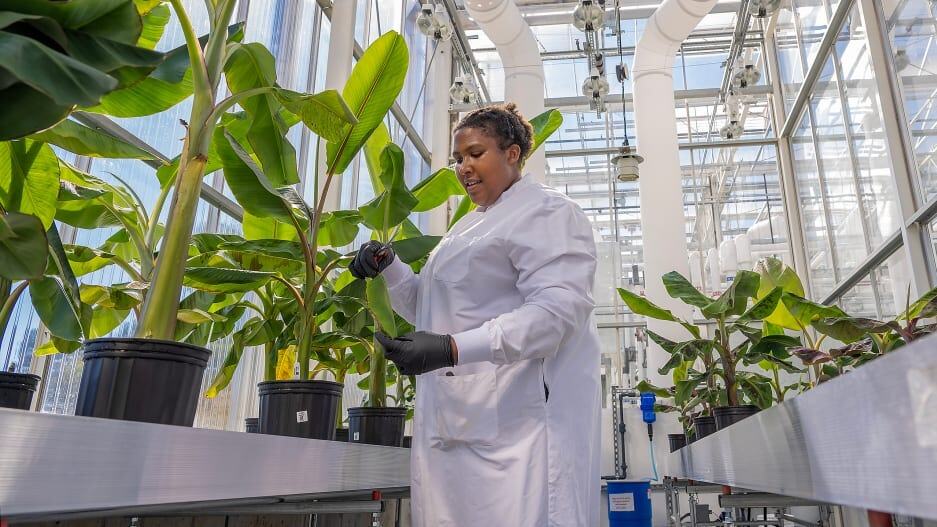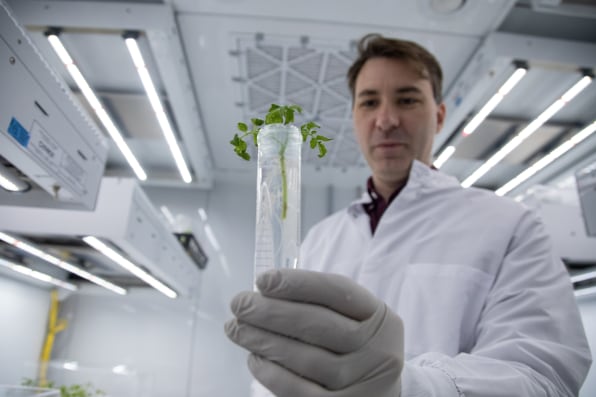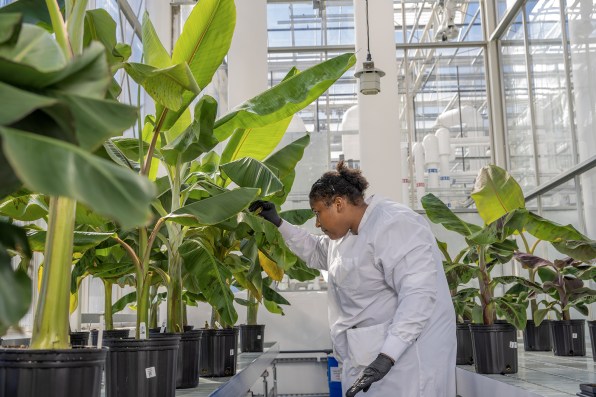- | 9:00 am
Can gene editing help save the banana?
A fungus is threatening to wipe out the world’s most popular banana. Scientists are trying to save it.

There are more than a thousand types of bananas in the world. But one variety, the Cavendish, is ubiquitous in supermarkets and makes up the vast majority of the 10 billion bananas imported into the U.S. each year. It’s also at risk of disappearing.
In late January, when the Venezuelan government announced that it had detected a banana-killing fungus on farms in some areas, it was the latest outbreak of a disease that has been slowly spreading around the world. Last year, Peru declared a state of emergency when it detected the same disease. In Colombia, where the fungus was discovered in 2019, hundreds of acres of banana trees were destroyed in an attempt to stop it from spreading.
First discovered in Taiwan in the 1990s, the fungus spread through Asia to the Middle East and Africa before ending up in Central and South America. Once it’s in the soil, it stays there, so the land can no longer be used to grow bananas.

No good solution exists yet. But on a Dole banana plantation in Central America, a new field trial will soon test Cavendish bananas that have been gene edited in an attempt to help them survive the fungus. Elo Life Systems, the biotech company that developed the bananas, used data analytics to quickly sort through the genomes of other varieties (and other plants) that are naturally resistant to the disease.
“We go out and survey nature and try to find solutions that are out there,” says Todd Rands, CEO of Elo Life Systems. “We find interesting kinds of proteins or oil molecules, like essential oils that are naturally occurring in a lot of plants. And those same elements exist in bananas. All we need to do is figure out how to get them to turn on in the right tissues where that disease is coming in.”
The fungus, a species called Fusarium, causes banana trees to wilt and then slowly die. “It colonizes in the vascular tissues, the ‘blood vessels’ of the plants, and it just eats them up,” Rands says. “It destroys them. [When] you cut the plant, the inside is completely blackened and rotted. It essentially rots from the inside. So if you’re looking at a plantation, the plants will initially just kind of be sick. That first year, you notice they’re not producing as much. And by the second year, you’re losing a massive amount of production. By the third year, they’re dying.”
So far, the banana industry has responded by moving production to new locations. When they move, that often also means cutting down forests to clear the land for banana trees. For small growers, who may own a small plot of land and not have the ability to move, the fungus can mean losing their livelihoods.

Companies like Dole are seeking alternatives. “They came to us and said, we’ve got to find a solution here,” Rands says. “We need to do something that makes these plants resistant because we can’t just keep shifting our production areas forever. We’re running out of time and we’re going to run out of land to do that.”
The industry has faced an existential crisis before: Until the 1950s, the dominant species of bananas found at grocery stores was called the Gros Michel, but another strain of the same fungus wiped out production on large plantations, and the industry made the switch to Cavendish.
Because bananas are grown as clones, each identical to the original plant, a pathogen that kills one plant can easily kill the rest. The monoculture on farms is arguably part of the problem, since growing more varieties of bananas would make farms more resilient to disease, although multiple species are susceptible to Fusarium.
Since it takes time for the trees to grow, the new plants at the Dole plantation aren’t yet proven. But in the lab, the gene-edited bananas survived high doses of the fungus. Now they’ll be grown and tested in Dole’s nurseries, and then moved into fields that are not in use because they’re infected with the fungus. By the end of next year, researchers should know whether the plants can survive and perform as well as the original banana trees. Other startups are also racing to test gene-edited bananas.
As climate change makes it harder to grow crops, the expectation at Elo Life Systems is that similar work will be needed for other foods. The “problems are not going away,” Rands says. “As the climate changes, as the temperatures change, as water levels change in different places, as storms blow diseases into new areas, all of those things are going to have to be dealt with, and we’re going to need more and more technology to help us accomplish that.”






































